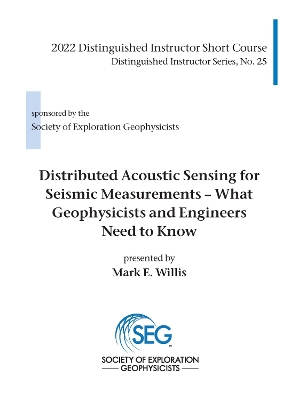Distinguished Instructor
1 total work
Geoscientists and engineers are very comfortable using seismic data sets acquired with geophones, hydrophones, and accelerometers because we have a long, well-defined set of standards for acquiring, processing, and interpreting them. However, distributed acoustic sensing (DAS) seismic measurements are rapidly augmenting, and in some cases replacing, the data from these conventional tools. Technologists are frequently unaccustomed to using DAS seismic data sets since it directly acquires relative strain or strain rate measurements and not the more familiar pressure, displacement, velocity, and acceleration data. There are also acquisition parameter selections that must be made to optimize the acquired data to accomplish the purpose of the seismic survey. This book is designed to build an intuition and understanding of the value, limitations, and applications of DAS seismic technology.
